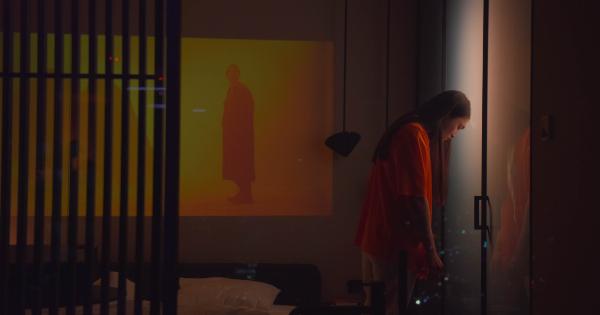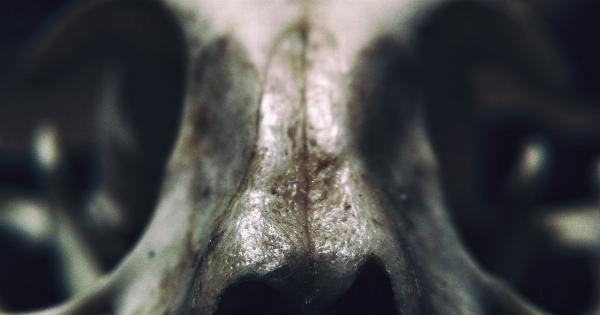Narcolepsy is a chronic neurological disorder that affects the brain’s ability to regulate sleep-wake cycles. People with narcolepsy experience excessive daytime sleepiness and may have sudden bouts of sleep during the day.
These sleep attacks can occur at any time and in any place, making it difficult for individuals with narcolepsy to carry out their daily activities.
While narcolepsy is a relatively rare disorder, affecting about 1 in 2,000 people, it can have a significant impact on an individual’s quality of life if left undiagnosed and untreated.
In this article, we will explore why it is important to get checked for narcolepsy and how early diagnosis and treatment can make a difference.
The Importance of Early Diagnosis
Like many other medical conditions, early diagnosis of narcolepsy is crucial for effective management and improved quality of life.
Unfortunately, narcolepsy often goes undiagnosed or misdiagnosed for several years, leading to unnecessary suffering and delays in receiving appropriate treatment.
Here are several reasons why early diagnosis is essential:.
1. Accurate Diagnosis
Excessive daytime sleepiness can be a symptom of various health conditions, including sleep apnea, insomnia, or other sleep disorders.
Getting checked for narcolepsy ensures an accurate diagnosis, ruling out other potential causes and enabling healthcare professionals to tailor treatment specifically for narcolepsy.
2. Preventing Accidents and Injuries
Narcolepsy can significantly impair a person’s ability to stay alert and awake during daily activities. Falling asleep unexpectedly can lead to accidents while driving, operating machinery, or engaging in other potentially dangerous tasks.
By getting checked for narcolepsy, individuals can receive appropriate treatment to manage their symptoms and reduce the risk of accidents and injuries caused by sudden sleep attacks.
3. Improving Quality of Life
Uncontrolled narcolepsy symptoms can greatly impact a person’s quality of life. Excessive daytime sleepiness can interfere with work or academic performance, social interactions, and recreational activities.
By getting diagnosed and treated early, individuals can regain control over their daytime sleepiness and enjoy improved quality of life.
4. Managing Other Associated Symptoms
In addition to excessive daytime sleepiness, narcolepsy is often accompanied by other symptoms such as cataplexy, sleep paralysis, and hallucinations. These symptoms can be distressing and disruptive to daily life.
Early diagnosis allows healthcare professionals to devise a comprehensive treatment plan that addresses all symptoms, minimizing their impact on individuals’ overall wellbeing.
Recognizing the Symptoms
Narcolepsy symptoms can vary from person to person and often develop gradually over time. It is essential to be aware of the common signs that may indicate narcolepsy. Some of the key symptoms include:.
1. Excessive Daytime Sleepiness
Feeling excessively tired during the day, regardless of receiving sufficient nighttime sleep, is a hallmark symptom of narcolepsy. Individuals may struggle to stay awake, even in the midst of engaging activities or conversations.
2. Sudden Sleep Attacks
Experiencing sudden and uncontrollable bouts of sleep, referred to as “sleep attacks,” is a characteristic symptom of narcolepsy.
These sleep attacks can occur at any time, whether during a meal, in the middle of a conversation, or while performing daily tasks.
3. Cataplexy
Cataplexy is a sudden loss of muscle tone triggered by strong emotions, such as laughter, anger, or surprise. It can range from mild, causing drooping of facial muscles, to severe, leading to temporary paralysis of the entire body.
4. Sleep Paralysis
Sleep paralysis is the inability to move or speak while falling asleep or waking up. It can be a frightening experience, as individuals may feel awake but are temporarily unable to move their bodies.
Sleep paralysis is often accompanied by vivid hallucinations.
5. Vivid Hallucinations
Vivid and often bizarre hallucinations during the transition between sleep and wakefulness are another common symptom of narcolepsy. These hallucinations can be visual, auditory, or tactile, and may sometimes be mistaken for real experiences.
Seeking Medical Evaluation
If you experience any of the symptoms mentioned above, it is important to seek medical evaluation to determine the cause.
A healthcare professional, such as a sleep specialist, can assess your symptoms, medical history, and perform diagnostic tests to confirm or rule out narcolepsy.
The evaluation process may include:.
1. Medical History
Providing your healthcare professional with a detailed medical history, including your sleep patterns, symptoms, and any other relevant information, can help in the diagnostic process.
2. Sleep Diary
Keeping a sleep diary for a certain period can provide valuable insights into your sleep patterns and help identify any underlying issues contributing to excessive daytime sleepiness.
3. Epworth Sleepiness Scale
The Epworth Sleepiness Scale is a simple questionnaire used to assess a person’s daytime sleepiness. It measures the likelihood of dozing off or falling asleep in various situations, such as watching TV, reading, or sitting in a meeting.
4. Polysomnography
Polysomnography is an overnight sleep study performed in a sleep center. It records various physiological parameters during sleep, such as brain activity, eye movements, heart rate, and breathing patterns.
Polysomnography can help detect abnormalities in sleep architecture and rule out other sleep disorders.
5. Multiple Sleep Latency Test
The Multiple Sleep Latency Test (MSLT) is typically performed the day after polysomnography. It measures the time it takes for a person to fall asleep during several daytime naps. Short sleep onset times during the MSLT can be indicative of narcolepsy.
Treating Narcolepsy
While there is currently no cure for narcolepsy, effective management options are available to help individuals lead fulfilling lives.
Treatment plans are tailored to the individual and may involve a combination of medications, lifestyle modifications, and support strategies.
Some common treatment approaches for narcolepsy include:.
1. Stimulant Medications
Stimulant medications, such as modafinil or methylphenidate, are often prescribed to combat excessive daytime sleepiness and promote wakefulness. These medications can help individuals stay alert and improve daytime functioning.
2. Antidepressant Medications
Specific antidepressant medications, such as selective serotonin reuptake inhibitors (SSRIs) or serotonin-norepinephrine reuptake inhibitors (SNRIs), may be prescribed to manage cataplexy and other symptoms of narcolepsy.
3. Scheduled Naps
Intentionally incorporating scheduled short naps into the daily routine can help individuals with narcolepsy manage their sleep attacks and combat excessive daytime sleepiness.
4. Lifestyle Modifications
Adopting a consistent sleep schedule, practicing good sleep hygiene, and maintaining a healthy lifestyle can complement medical treatment and optimize symptom management.
5. Support Strategies
Joining support groups or seeking counseling can be beneficial for individuals with narcolepsy.
Sharing experiences and coping strategies with others who understand the challenges of living with narcolepsy can provide emotional support and practical advice.
Conclusion
Narcolepsy is a chronic neurological disorder that can significantly impact an individual’s daily life if left undiagnosed and untreated.
Early diagnosis is essential for accurate identification of the disorder, preventing accidents and injuries, improving quality of life, and managing associated symptoms.
If you experience excessive daytime sleepiness, sudden sleep attacks, or other symptoms associated with narcolepsy, it is crucial to seek medical evaluation.
A healthcare professional can perform the necessary diagnostic tests and develop a personalized treatment plan to help you effectively manage your symptoms and regain control over your sleep-wake cycle.



























